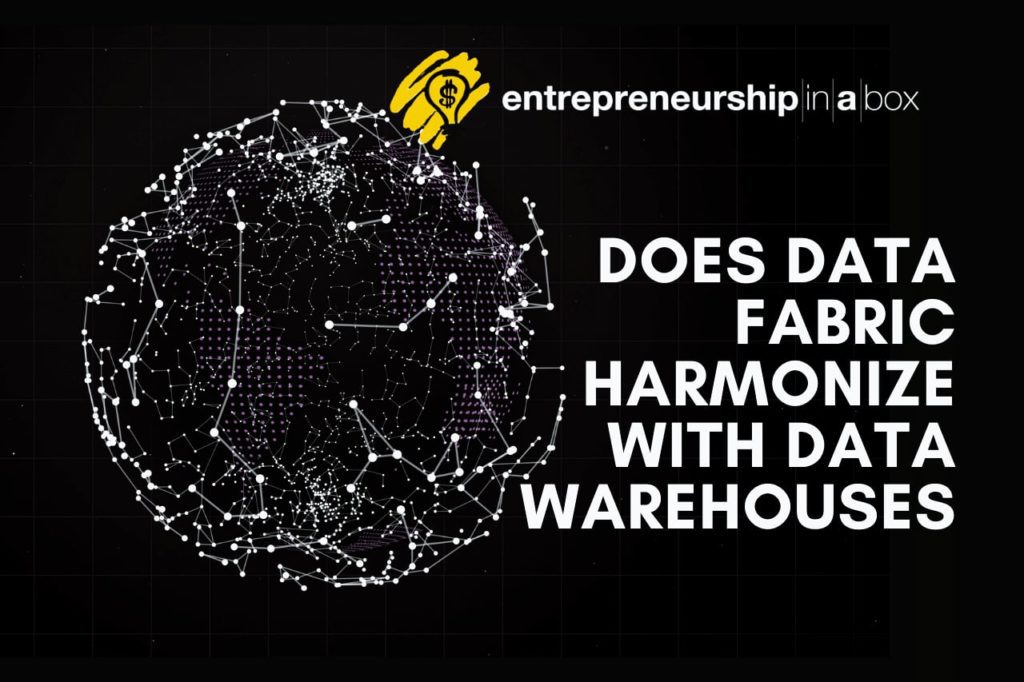To answer whether data fabric can complete or round off data warehouse, one has to first ask what is data fabric?
Data fabric is a design and batch of information services that furnish constant abilities across a selection of endpoints traversing on-premises and numerous cloud settings.
Data fabric creates and combines data administration across clouds and on-premises to stimulate digital change.
To align data warehouses (DWH) with progressive analytics at scale needs more than the availability of data. What it requires is a data fabric.
For industrial businesses, the route to maximum value from data liberty needs a few critical moves. Numerous companies have already accomplished the first move, freeing data from isolated source networks and accumulating it in a conventional data warehouse.
In the current developed DWH market, advanced data-propelled companies are vigorously using data fabric outcomes as an addition to prevailing DWH techniques.
With data fabric, institutions are again able to emancipate their data. Hoisting it from the pileup’s reservoir and transforming it into contextualized information to transmit on their yearnings for progressive analytics.
Distinction Between Data Fabric & DWH
The two central shafts of data fabric are understanding/context and discovery. These define data fabric and make it both distinctly different from and complementary to existing DWH.
Data context is the outcome of data connection mining and organization in what is referred to as a contextualization channel. The method of amplifying context to data is frequently cited as data contextualization or infusion of data.
Putting Data Into Perspective
Before data was brought into perspective, it was frequently incorporated from a bunch of source processes and kept in a mutual data storage, identical to the conventional data warehouse.
On the other hand, data integration is made virtual via a data coalition, averting the necessity for data repeat and transferral.
Of late, a dual strategy has become widespread, particularly for latency-sensitive internet of things data requisitions, wherein data collection and synthesis have to be conducted near to the data.
How Do Industrial Entities Benefit?
Major industries such as petroleum and gas have faced limitations for years, making their data digital because of obsolete IT systems that depend on legacy networks, proving costly and inefficient.
Rounding out current DWH solutions with data fabric has drastically lessened costs. In the meantime, it simultaneously facilitates scalability, increased production, and data exposure right through their numerous intricate consumer establishments.
Data finding speaks to ensuring data is easily accessible to the correct user in the precise configuration.
This has constantly been the objective of data designers. Discovery in business to consumer technology is immediate, self-sufficient, and constantly learning.
Basically, it’s the way in front of enterprise and IoT information. However, that’s where they’re headed, changing positions from vigorous search to passive discovery established on personalized applicability.
Recently, the exponential increase in data volume, velocity, and business value, coupled with the meteoric rise of low code and citizen data science programs, is making data discovery more important than ever before.
In the context of enterprise data administration, facilitating the correct data to be effortlessly found depends basically on the exact ingredients: the correct metadata, tagging, connections to other data, and information filing to create readable by both devices and people.
Obsolete physical metadata administration is deliberately displaced by effective, machine learning-backed metadata procedures, utilized to find and discern more metadata from connections and grouping.
Finally, one has to ask again- what is data fabric? It is a solution that advanced organizations are pursuing to complete their DWH techniques.
Data fabric expands critical context and discovery to prevailing DWH data properties.
Completing DWH with data fabric is the single path to forge through all the steps to authentic data independence.





